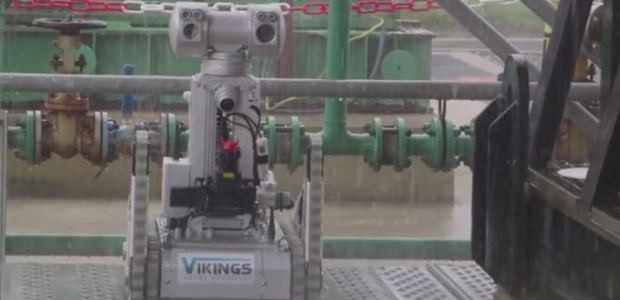
Total's Robot Challenge Nears Finish Line
Five teams have competed in the ARGOS Challenge for the past three years to design the world's first autonomous oil and gas surface robot, with the winner to be chosen May 11.
Energy company Total S.A. has entered a new phase in its robotics work – the company reports it has partnered with the French National Research Center to create a sensor-equipped drone that can measure gas concentrations such as CO2 or methane around industrial installations. The company's ARGOS Challenge also is coming down to the finish line.
Total and the center's researchers will have four years to work on the drone's sensors to make them as miniaturized and reliable as necessary. The program is named AUSEA, for Airborne Ultra-light Spectrometer for Environmental Applications. The company reported this week that these drones will be able to model any gas dispersion and its concentration in the air and to evaluate gas emissions in real time at very low thresholds.
Total plans to test them at various sites, including refineries and hydrocarbon production platforms, with the initial testing done in the south of France on a Total industrial site next summer. The company also uses remotely operated underwater vehicles to install and connect equipment to subsea lines or for maintenance and this year will finish work on an autonomous underwater vehicle that can inspect wellheads or pipelines over distances of several dozen kilometers, identify anomalies on its own using laser scanning, generate real-time alerts and send panoramic photos and other data captured at depths of 3,000 meters, and deviate from its programmed routine if it discovers a problem.
The ARGOS Challenge – its name stands for Autonomous Robot for Gas and Oil Sites Challenge – conducted its third phase in March 2017. It seeks to create the first autonomous surface robot adapted to oil and gas sites in less than three years, as a way to increase safety for human operators. Five teams (AIR-K, ARGONAUTS, FOXIRIS, LIO, and VIKINGS) are competing, with a winner to be chosen on May 11.
The robots are supposed to be able to carry out inspections, detect anomalies, and intervene in an emergency.